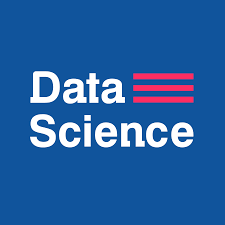
About Data Science
Data Science is an interdisciplinary field that combines statistics, programming, and domain knowledge to extract meaningful insights from data. It involves techniques like data analysis, machine learning, data visualization, and predictive modeling to solve real-world problems. Data Science helps businesses make data-driven decisions, forecast trends, and improve operations across various industries such as finance, healthcare, retail, and technology.
Data Science Course Contents
Duration: 6 Months
Fees: 35K
Module 1. Python Programming
Learning the basics of Python programming is essential for data scientists to manipulate and visualizing data. This section will cover the basic syntax, operators, strings, functions, and other essential details to help you analyse large amounts of data and manipulate them.
Python Introduction and setting up the environment
Python Basic Syntax and Data Types
Operators in Python (e.g., Arithmetic, Logical, Bitwise)
Strings in Python
Lists
Tuples
Sets
Dictionaries
Python conditional statements (e.g., if, if-else, if-elif-else)
Loops in Python (e.g., while, for, break, continue)
Getting Started with HackerRank use cases and working on them
List and Dictionaries comprehension
Functions
Anonymous Functions (Lambda)
Generators
Modules
Exceptions and Error Handling
Classes and Objects (OOPS) (including different types of methods, inheritance, polymorphism, operator overloading, overriding)
Date and Time
Regex (e.g., re.search(), re.compile(), re.find(), re.split())
Files (including opening, closing, reading and writing files)
APIs the Unsung Hero of the Connected World
Python for Web Development – Flask
Hands-On Projects (Web Scraping, Sending Automated Emails, Building a Virtual Assistant)
Module 2. Data Analysis
Data analysis helps you in making informed decisions with data exploration and visualization using advanced tools. This section will cover the basics along with teaching you how to scrape data from websites using libraries like BeautifulSoup and handling and storing them in appropriate formats.
Packages (Working on Numpy, Pandas, and Matplotlib)
Web Scraping (learning about tools, libraries and ethical considerations)
Exploratory data analysis (EDA) using Pandas and NumPy
Data Visualization using Matplotlib, Seaborn, and Plotly
Database Access
Tableau
Power BI
Module 3. Statistics
The specific topics covered in the statistics section give you an overview of descriptive statistics and inferential statistics that provide the foundation for understanding and analyzing complex data. Explore the statistical foundations for data signs from this section and apply them to data analysis projects.
Descriptive Statistics (including central tendency, variance, standard deviation, covariance, correlation, probability)
Inferential Statistics (including Central limit theorem, hypothesis testing, one-tailed and two-tailed test, and Chi-Square test)
Module 4. Machine Learning
This part of the syllabus comprises mathematical models and algorithms that are needed in coding machines to adapt them to real-world challenges. The course comprises basic knowledge of machine learning and its three main types: supervised, unsupervised, and reinforcement learning among other essential topics.
Introduction to Machine Learning
Introduction to data science and its applications
Data Engineering and Preprocessing
Model Evaluation and Hyperparameter Tuning
Supervised Learning – Regression
Supervised Learning – Classification
SVM, KNN & Naive Bayes
Ensemble Methods and Boosting
Unsupervised Learning – Clustering
Unsupervised Learning – Dimensionality Reduction
Recommendation Systems
Reinforcement Learning
Developing API using Flask / Webapp with Streamlit
Deployment of ML Models
Project Work and Consolidation
Module 5. NLP
Natural Language Processing NLP helps machines understand and create human language. This section will teach you Named Entity Recognition, text pre-processing, and text representation, along with applications ranging from sequential modelling, and building sentiment analysis.
Natural Language Processing (NLP) (including NER, text representation, sequential model, sentiment analysis)
Module 6. Deep Learning
This section allows you to master advanced topics like CNN (Convolutional Neural Networks), RNN (Recurrent Neural Networks), Neural Network architecture, and more.
RISE OF THE DEEP LEARNING
Artificial Neural Networks
Convolution Neural Networks
CNN – Transfer Learning
RNN – Recurrent Neural Networks
Generative Models and GANs
Module 7. Computer Vision
The computer vision syllabus allows you to understand how to create algorithms for computers to read and write data sent via images or videos.
Computer Vision (including reading and writing images, drawing shapes using OpenCV, reason eye detection using OpenCV, VGG, CNN with Keras)
Bonus Module: Projects & Case Study
Real-Time Rain Prediction using ML
Real-Time Drowsiness Detection Alert System
House Price Prediction using LSTM
Customizable Chabot using OpenAI API
Fire and Smoke Detection using CNN
Looking Reading Material? Click here
Advance Your Career with Data Science Training at Learn Tech Masters
Join Learn Tech Masters to master the most in-demand skills in Data Science. Our expert-led online training covers Python, statistics, machine learning, and real-world projects to prepare you for a successful career in analytics and AI.
